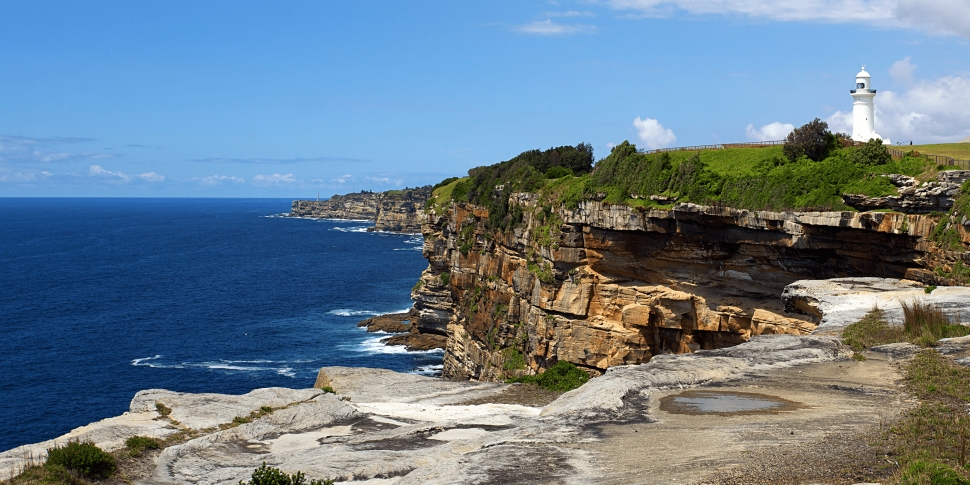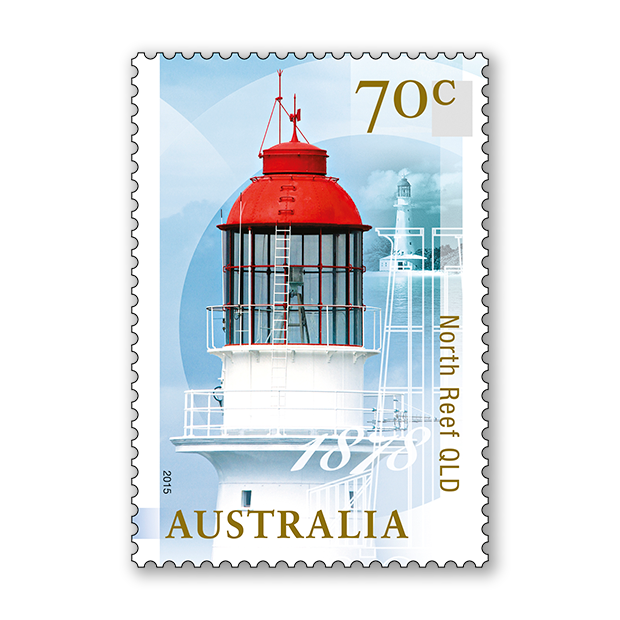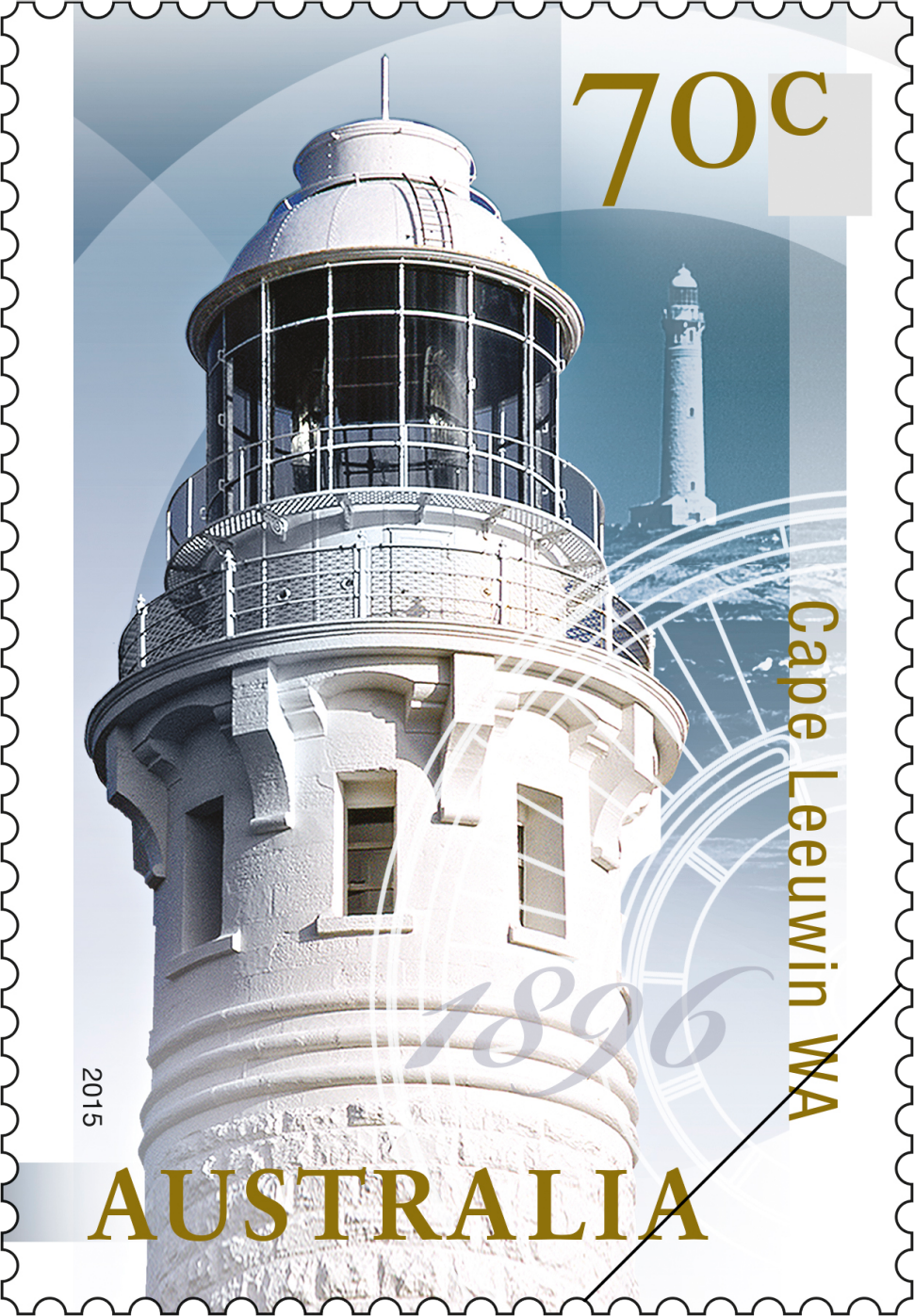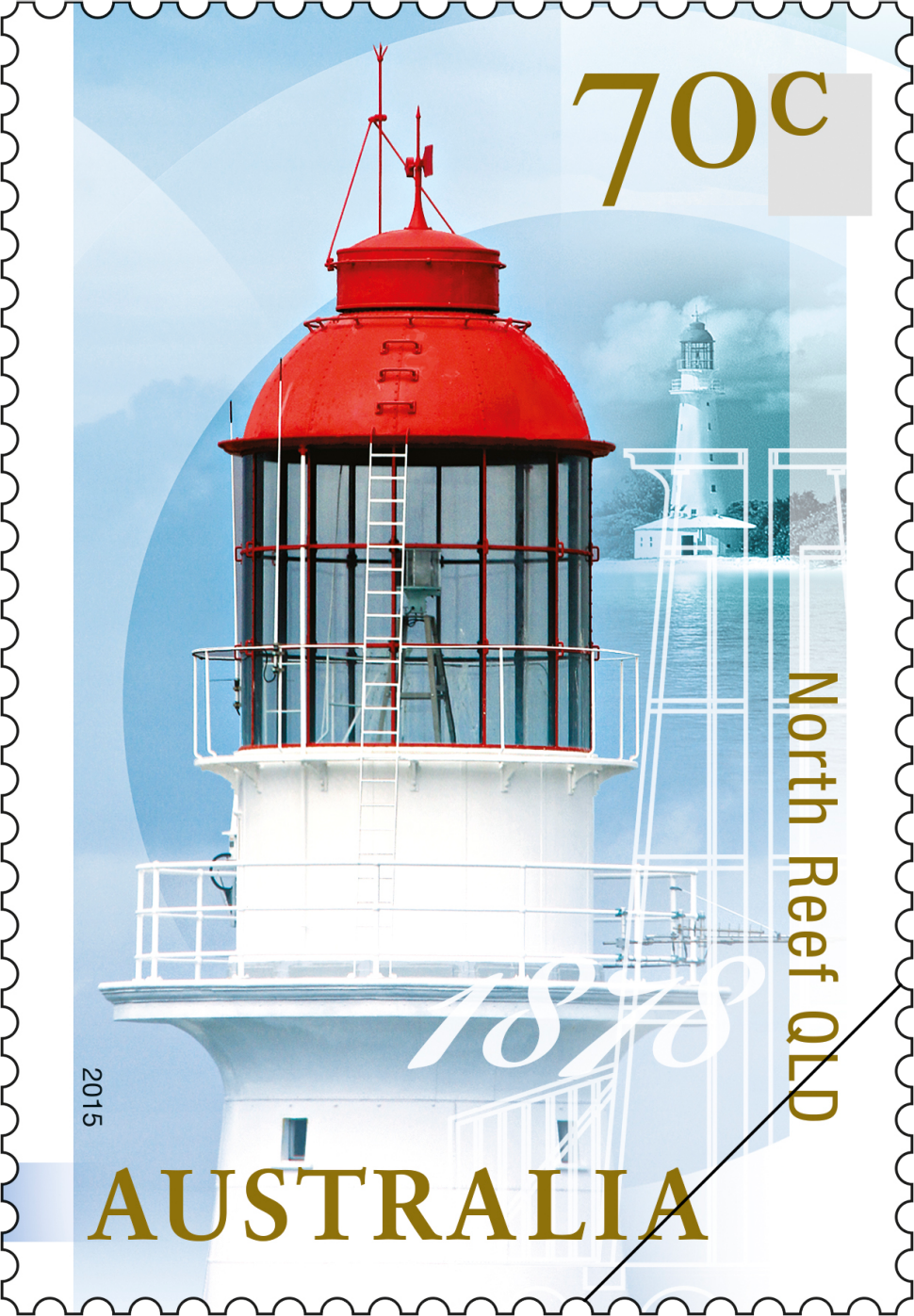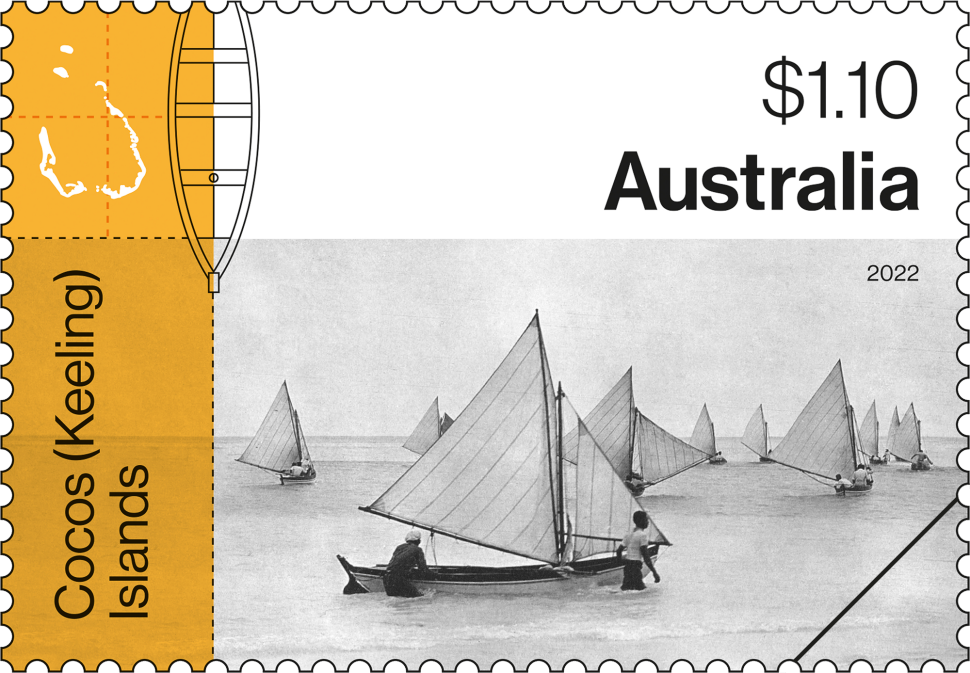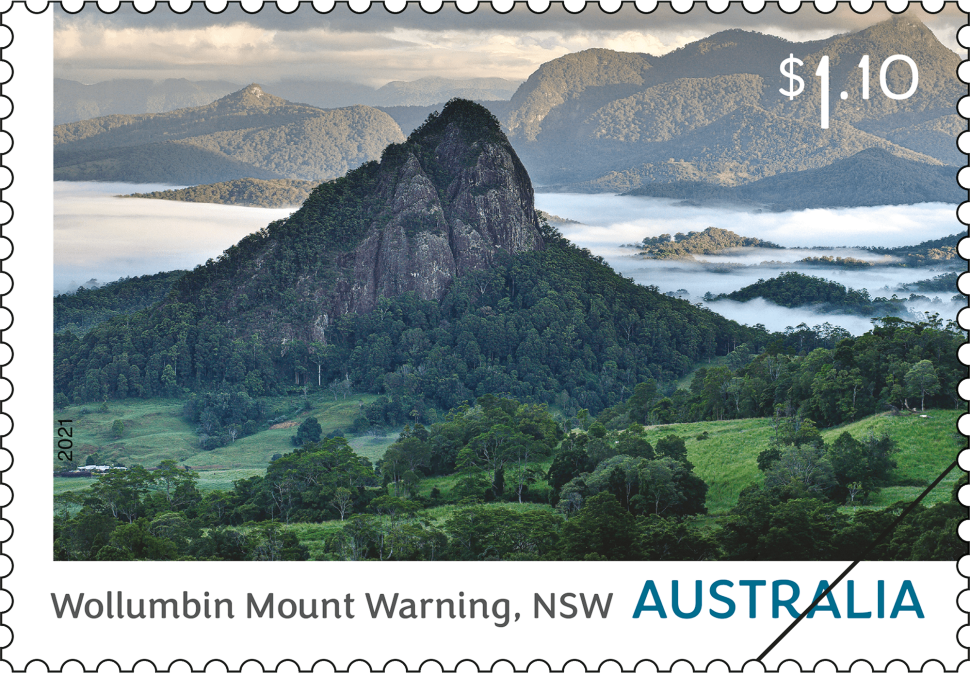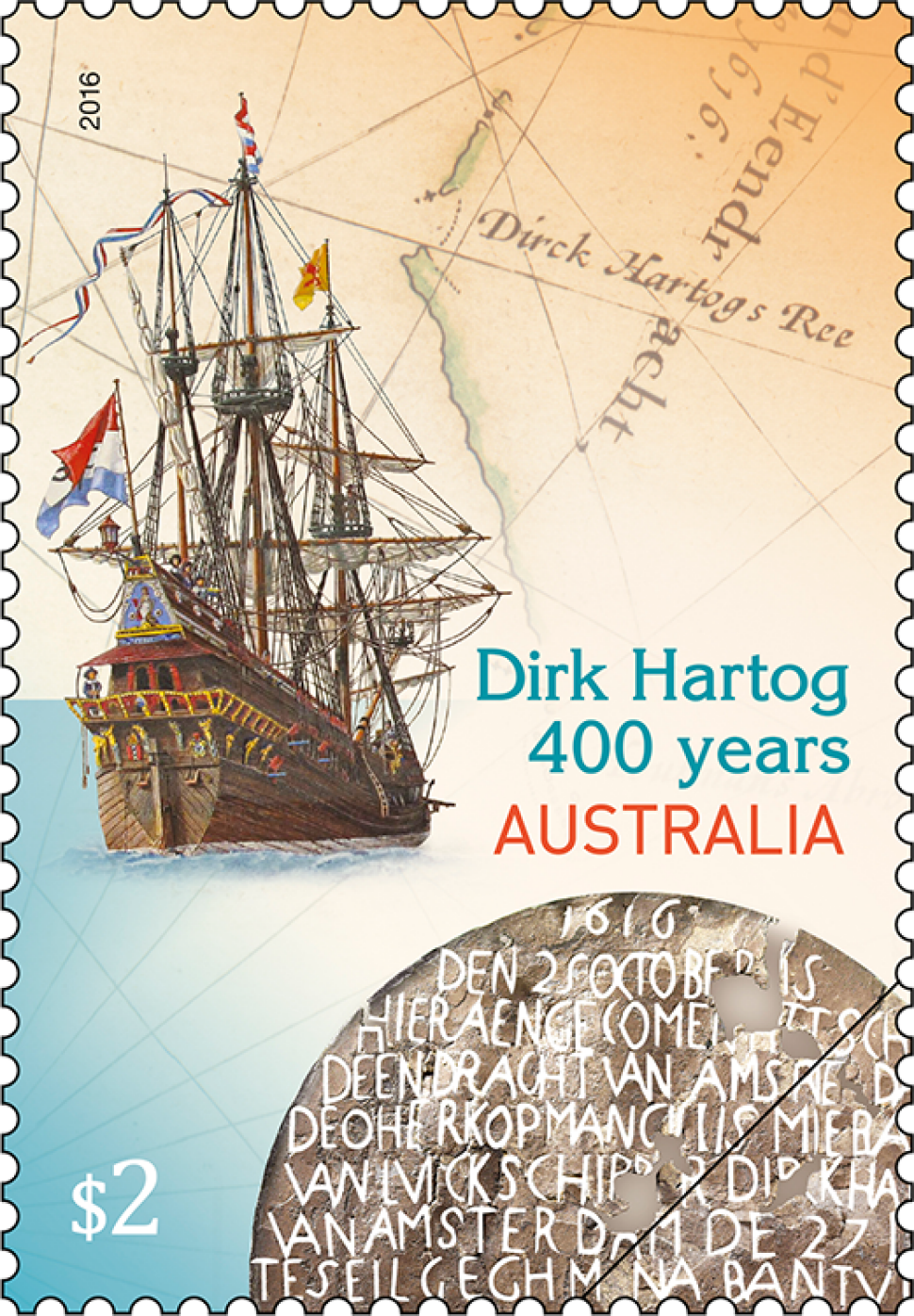This stamp issue commemorates 100 years of Commonwealth Management of Lighthouses. Transfer of control from the states the Commonwealth took place on 1 July 1915 when the Lighthouses Act 1911 came into effect.
The Australian continent has 37,600 kilometres of coastline and countless potential hazards, such as reefs, sandbars and strong currents, for ships approaching landfall. Foundering vessels and the consequent loss of life and goods created the need for manned beacons built on harbours, islands, coral reefs and beaches, warning mariners of the dangers. The first lighthouse to be erected in the colony was completed in 1818 at South Head, Sydney at the entrance to Port Jackson. Known as Macquarie Light it was designed by convict architect Francis Greenaway, who was emancipated by Governor Lachlan Macquarie after the success of the project.
The responsibility for constructing lighthouses remained with the separate states until Federation in 1901, after which the administration of lighthouses became a Commonwealth responsibility. However transfer of control did not actually take place until 1915. When the Commonwealth of Australia officially accepted responsibility for all landfall and coastal lights around Australia it comprised 167 lighthouses including 103 manned lights. The individual states retained responsibility for all harbour lights.
The responsible department has had many names, but since 1991 the aids to navigation function have been the responsibility of the Australian Maritime Safety Authority (AMSA). Today there are some 388 aids to navigation sites controlled by AMSA. Because the design of lighthouses was managed by the states until 1915, the architectural styles of Australian lighthouses, particularly from the 19th and early 20th centuries, are quite diverse. Building materials include concrete, locally quarried granite, sandstone and limestone, and fabricated iron work, timber or galvanised iron.
The lamps in early lighthouses were powered by kerosene. When Gustaf Dalén invented the Dalen Flasher and Sun Valve in 1907, kerosene was replaced by acetylene. This allowed the lights to be unmanned, so that many new lights were erected in previously inhospitable places. It also meant that the demanning of lighthouses started back in the 1920s. Once solar power became available all the “off grid” beacons were converted to electricity.
Starting in the 1980s there was a concerted effort to automate the remaining 41 manned lighthouses. This task was completed on 22 August 1996, when the last keeper, Chris Richter, left Tasmania’s Maatsuyker Island, Australia's most southerly light. This did not mean the lights were deactivated. In spite of satellite navigation systems, all of them are still operational.
Products released in this issue
- Stamp (4 x 70c)
- First day covers (gummed, self-adhesive and blank pictorial)
- Stamp pack
- Maxicard (4)
- PNC (RAM)
- PNC (PM)
- Prestige booklet
- S/A booklet of 20 x 70c
- Chequebook of 20 x 20 x 70c
- Roll of 200
- Strip of four
- Gutter (10 x 70c) with design
Technical specifications
- Issue date
- 7 July 2015
- Issue withdrawal date
- 31 December 2015
- Denominations
- 4 x 70c BL4
- Stamp design
- Stacey Zass, Page12design
- Product design
- Stacey Zass, Page12design
- Printer
- McKellar Renown
- Paper - gummed
- Tullis Russell
- Paper - self-adhesive
- C100
- Paper (rolls)
- SC85/WG65
- Printer (rolls)
- Pemara
- Printing process
- Lithography
- Stamp size
- 26mm x 37.5mm
- Perforations
- 13.86 x 14.6
- Sheet layout
- Module of 50 BL4, printed gutter
- FDI postmark
- Safety Bay, WA 6169
- FDI withdrawal date
- 5 August 2015
Cape Byron lighthouse, constructed in 1901, is located on Australia’s most easterly point of the mainland. With some 1.2 million visitors every year, it is the most visited lighthouse site in the country. A lighthouse on the site was first seriously considered in the mid-1890s, as Byron Bay had become a significant shipping port, and construction commenced in 1899. The architect was Charles A Harding, the architect in charge of lighthouse design in the Public Works Department. He modelled the design, which featured towers with large ornate crowns, on the style of James Johnstone Barnet, who as Colonial Architect (1862–90) designed 20 lighthouses in New South Wales. The 22-metre lighthouse tower was made of solid concrete blocks. There are also three concrete block residences: the head keeper’s house and a duplex used by the assistant keepers.
The original light, which is unique in Australia, is still in use. It is a revolving two-panel first-order dioptric/catadioptric bivalve “feu éclair” (lightning flash) optical apparatus, manufactured by Societé des Etablissements Henry-Lepaute of Paris, with a first-order, 4.0-metre Chance Brothers lantern room. There is also a fixed, red auxiliary light, shining towards the north east, which marks the Juan and Julian Rocks. During the 88 years of manual operation between 40 and 50 lightkeepers maintained the lighthouse. The Cape Byron light is still operative and, with an intensity of 2,200,000 candelas, is Australia’s most powerful light.
Cape Leeuwin, the most south-westerly tip of the continent, is where the Indian Ocean meets the Southern Ocean. A lighthouse at Cape Leeuwin was mooted as early as 1881 but prior to the discovery of gold the government could not afford to pay for its construction. It was finally completed in 1896. A handsome 39-metre rusticated block tower, and the tallest traditional lighthouse in the state, it was built from locally quarried limestone. The walls at the tower base are over 2.7 metres thick and a spiral staircase of 186 steps leads to the top.
The original first-order 920 millimetre lens and 3.7 metre lantern room, manufactured by the English firm Chance Brothers, are still in operation. The original light was a kerosene wick lamp, then the world's largest, revolving in a mercury bath. This light had an intensity of 250,000 candelas and was visible for 40 kilometres. In 1925 the light was upgraded to vaporised kerosene with a mantle, giving a light intensity of 780,000 candelas. In 1982, the clockwork mechanism and kerosene burner, were converted to electricity. The new 1,000 watt halogen lamp increased the candelas to 1,000,000. In September 1992 the light was fully automated and the lighthouse demanded.
This unusual lighthouse was built in 1878 on North Reef, in the Capricorn Group at the southern end of the Great Barrier Reef. It lies 100 kilometres offshore from the port of Gladstone. The tower was originally built by Walker and Company of Maryborough on a small sandbank on the coral reef, which at high tide was covered by water. Because of the extreme conditions, North Reef lighthouse required the three keepers to actually live inside the lighthouse. North Reef is the only Australian lighthouse with accommodation within the structure that still stands in its original location.
At 24 metres in height, this is the tallest of the galvanised iron plated, timber framed lighthouses that are unique to Queensland. Over time, the lighthouse structure caused sand to build up around it, so today it stands on quite a substantial sand island complete with vegetation. The original optical apparatus was a second-order lens. After upgrades in 1923 and 1929, the light was converted to electric power in 1977 and the lightstation was demanned in 1978, it was later converted to solar operation in 1987. The lighthouse underwent a major refurbishment by AMSA in 2011. It is still operational and boasts a Chance Brothers 3.28-metre-diameter lantern room, housing the VRB-25 beacon.
Tasman Island is a small windswept rocky plateau surrounded by precipitous dolerite cliffs. It lies off Cape Pillar, about 25 kilometres from Port Arthur and is the most south-easterly point of Tasmania. The 29-metre lighthouse was erected in 1906 and was one of the last manned lights to be built in the state. It is also one of the most isolated in Australia, accessible today only by helicopter. The construction of the lighthouse was a feat of ingenuity. The prefabricated cast-iron panels were made in England and assembled in situ after being hauled up the steep 250-metre-high cliffs.
The lighthouse design of a round, white cast-iron tower with a double gallery was based on plans by Tasmanian company Huckson & Hutchinson. Two brick cottages were also erected; one for the head keeper and a duplex for the assistant keepers. There were also sheds for wood and coal. The original Chance Brothers (Manchester) first-order catadioptric lens with its kerosene burner, was removed when the light was automated in 1976. It is now on display in the Australian National Maritime Museum in Sydney. The light is now a VRB-25 beacon, which was initially powered by a wind generator until it was converted to solar power in 1991. The last keeper left Tasman Island lighthouse on 20 May 1977.
This content was produced at the time of the stamp issue release date and was last updated 18 July 2019.
